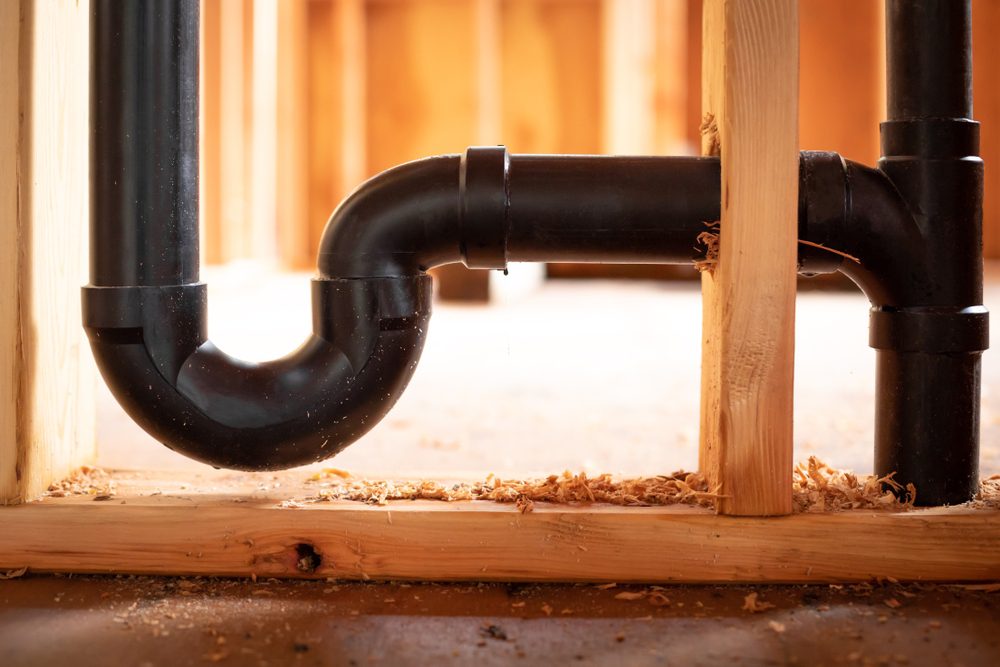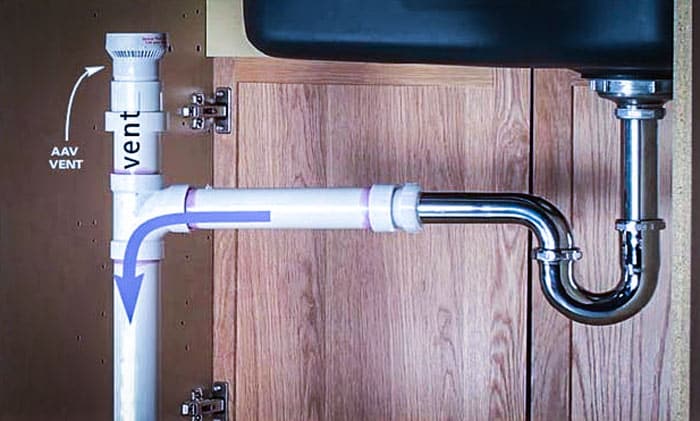The Value of Ventilation in Residential Plumbing Systems
The Value of Ventilation in Residential Plumbing Systems
Blog Article
How do you feel when it comes to What Is a Plumbing Vent and Why Is It Important?

Appropriate air flow in plumbing systems is usually overlooked, yet it is vital for maintaining the performance and security of your home's pipes. Air flow assists control air pressure, prevent the accumulation of unsafe gases, and make certain the effective removal of waste. In this guide, we will discover the importance of correct plumbing ventilation, just how it works, and the advantages it offers your plumbing system.
Recognizing Ventilation in Plumbing
Air flow in pipes describes the network of pipelines that enable air to stream via the drainage system. These vents serve multiple functions, including regulating air pressure within the pipes, avoiding sewer gases from getting in the home, and assisting in the smooth circulation of wastewater.
Exactly How Ventilation Functions in Plumbing Equipments
Atmospheric Pressure Policy
Proper ventilation maintains well balanced air pressure within the plumbing system. When water moves through pipelines, it displaces air. Without sufficient air flow, this displacement can produce adverse pressure, leading to slow down drains pipes or siphoning of water from catches, which can create unpleasant smells to seep into the home.
Preventing Sewage System Gas Buildup
Among the most important functions of pipes vents is to avoid drain gases, such as methane and hydrogen sulfide, from building up within the home. These gases can position serious health threats and are very combustible. Vent pipes enable these gases to get away safely outside.
Assisting in Waste Elimination
Ventilation helps in the effective removal of wastewater by protecting against airlocks in the drain system. When air can flow easily through the vents, it allows water and waste to flow efficiently via the pipes, reducing the risk of clogs and back-ups.
Sorts Of Plumbing Vents
Key Stack Vent
The main stack vent, additionally referred to as the vent stack, is the primary vent in a plumbing system. It prolongs from the main drain align through the roofing system, allowing gases to run away and fresh air to go into the system.
Branch Vent
Branch vents connect to the main stack air vent and serve private components, such as sinks, commodes, and showers. These vents guarantee that each component has appropriate air flow to work correctly.
Air Admittance Valve (AAV).
An Air Admittance Valve (AAV) is a one-way valve that allows air to enter the plumbing system without the demand for a typical vent pipe prolonging with the roof. AAVs are commonly utilized in remodellings or locations where installing a basic air vent is impractical.
Signs of Poor Ventilation in Plumbing.
Slow Draining Fixtures.
If your sinks, tubs, or bathrooms are draining pipes slowly, it could be a sign of inadequate air flow. Inadequate air flow can create a vacuum impact, making it tough for water to drain appropriately.
Gurgling Seems.
Gurgling noises coming from drains are commonly a result of air being drawn via water catches due to negative pressure in the pipelines. This is a clear indicator of insufficient ventilation.
Unpleasant Odors.
Sewer odors inside your home are a red flag that your pipes system is not appropriately ventilated. This could suggest that sewer gases are not being properly aired vent outside, causing potentially unsafe conditions.
Usual Ventilation Mistakes.
Inadequate Vent Sizing.
Using small vent pipes can result in bad air circulation and pressure imbalances in the system. It's necessary to utilize vents that fulfill the specific needs of your plumbing system.
Improper Vent Placement.
Putting vents as well much from the components they offer can decrease their effectiveness. Proper positioning makes certain that air can flow freely and efficiently via the system.
Disregarding Code Requirements.
Building ordinance provide specific standards for pipes air flow. Overlooking these codes can result in a system that stops working to operate correctly and might bring about pricey repairs or health hazards.
Benefits of Appropriate Ventilation.
Boosted System Performance.
Properly aerated pipes systems operate extra successfully, with fewer obstructions, faster draining pipes, and less stress on the pipes. This efficiency prolongs the lifespan of the pipes system.
Improved Air High Quality.
By avoiding sewage system gases from entering your home, correct air flow adds to far better indoor air quality, making your living setting healthier and much more comfy.
Protecting Against Water Damages.
Sufficient air flow aids prevent water from being siphoned out of traps, which can lead to sewer gases getting in the home and triggering water damages over time.
Actions to Make Sure Correct Air Flow.
Consulting Pipes Codes.
Always consult regional pipes codes when creating or modifying your pipes system. These codes provide the required standards for proper venting and guarantee your system satisfies security requirements.
Regular Examination and Upkeep.
Normal inspections can aid determine potential air flow concerns before they become significant troubles. Upkeep tasks, such as cleansing air vent pipes and looking for blockages, are important for keeping the system in good working order.
Professional Installation.
For new installments or significant adjustments, it's a good idea to work with an expert plumbing technician. They have the expertise to guarantee the ventilation system is correctly designed and set up according to code.
Verdict.
Proper air flow is an important component of any plumbing system, guaranteeing that it works effectively and safely. By understanding the relevance of ventilation, acknowledging the signs of bad ventilation, and taking steps to preserve your system, you can prevent pricey concerns and secure your home's air quality.
4 Things You Should Know About Your Plumbing Vents
What Plumbing Vents Are
Also called a vent stack, a plumbing vent is a vertical pipe attached to your drain line that runs through your roof. The plumbing vent pipe, or plumbing air vent, removes gas and odors from your plumbing system and allows fresh air to enter the pipes, helping the water to flow out of the drain pipes.
What Plumbing Vents Do
Plumbing vents have two basic functions. One of which is to allow unpleasant smelling wastewater and sewer gasses to escape your plumbing system instead of entering your home. Plumbing vent pipes are typically located on roofs, away from windows, to ensure the fumes exit the home completely.
The other function of the plumbing vent is to move fresh air into your plumbing system. This helps move water through every plumbing fixture in your house, like toilets and sink drains. Think of the way in which you need to let a little air into the bottle as you pour soda in order to make the drink flow smoothly.
Different Types of Plumbing Vents
True vent: This is the most common vent option. In simplest terms, a true vent is a vertical pipe attached to your drain line that exits through the roof. They often function as the main vent that other fixtures can connect to. Re-vent pipe or auxiliary vent: Attached to the drain line near specific plumbing fixtures, re-vent pipes run up and over to connect to the main vent. Common vent: Two plumbing fixtures installed on opposite sides of a wall are typically tied into the vent stack using something known as a sanitary cross. Wet vent: This venting option operates as a drain pipe and a vent at the same time. Wet vent drainage systems drain water from one fixture while venting the air from another. Although they’ve been used for over 100 years, wet vent systems have only recently been added to the plumbing code in many areas. If you’re planning on installing one in a bathroom remodel, make sure you check your local code prior to construction. Loop vent: For free-standing fixtures like kitchen island sinks, loop vents are ideal. These vent pipes run under the floor, rise from the P-trap, and create a loop inside the cabinet sink. Air admittance valve: An AAV is a one-way mechanical valve typically installed at the site of the plumbing fixture. AAVs allow venting to occur without having to tie into a larger venting system. They’re ideal for venting fixtures where you aren’t able to easily connect to an existing vent system. Common Plumbing Vent Issues
Although vent pipes typically don’t have water flowing through them, they’re still subject to many typical plumbing issues. For example, clogs are one of the most common problems associated with sewer vent pipes. If your vent pipe gets clogged, all of your plumbing fixtures tied into the vent stack will be affected.
A sink with a slow drain that bubbles and gurgles or a strong sewage smell around your toilet are both indicators that your toilet vent pipe is clogged. Because most vent pipes exit through the roof, old leaves, twigs or even a bird’s nest could be clogging the pipe.
Clogs in your vent pipe system cause a buildup of negative pressure, meaning that water won’t be able to flow out of your home very well. It’s similar to putting your finger over the opening of a straw to trap water inside. When you remove your finger, the water is able to flow out of the straw.
If you suspect you have any blockage in your vent, make sure you have a professional come examine the situation. Left unchecked, a blocked air vent can lead to other costly repairs, like leaks and sediment buildup.
Under Pressure
Pipe vents are essential aspects of a home’s plumbing system. Owning a home means learning about all sorts of things you never put much thought into before. But by understanding as much as you can about the important systems of your home, you can keep those budgets intact and those anxiety levels low.
https://www.homeserve.com/en-us/blog/home-improvement/plumbing-vents/

I stumbled upon that piece of writing about What Is A Plumbing Vent & How Do They Work? while surfing around the internet. So long as you enjoyed reading our blog post kindly remember to share it. Thank-you for your time invested reading it.
Call Today Report this page